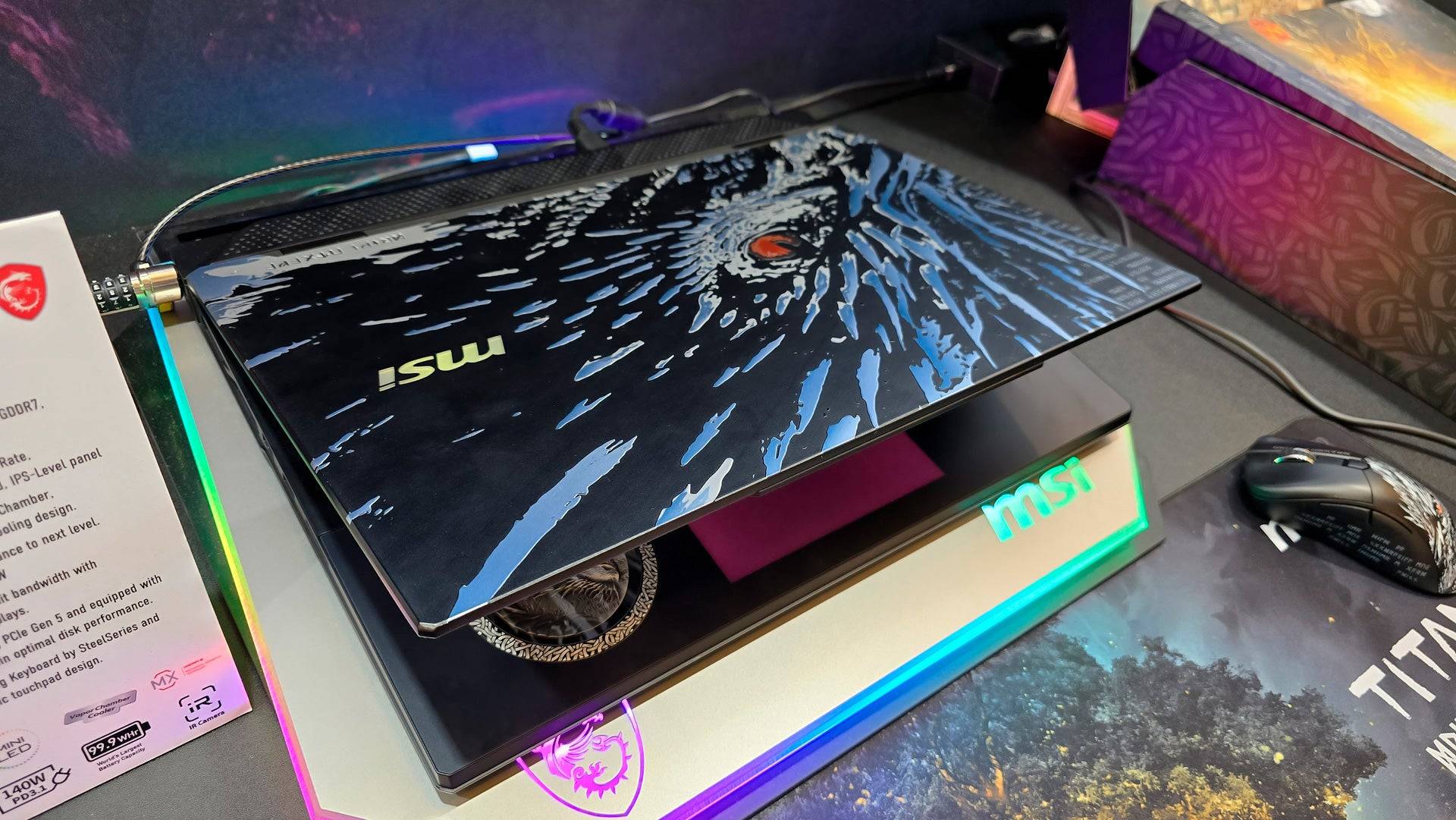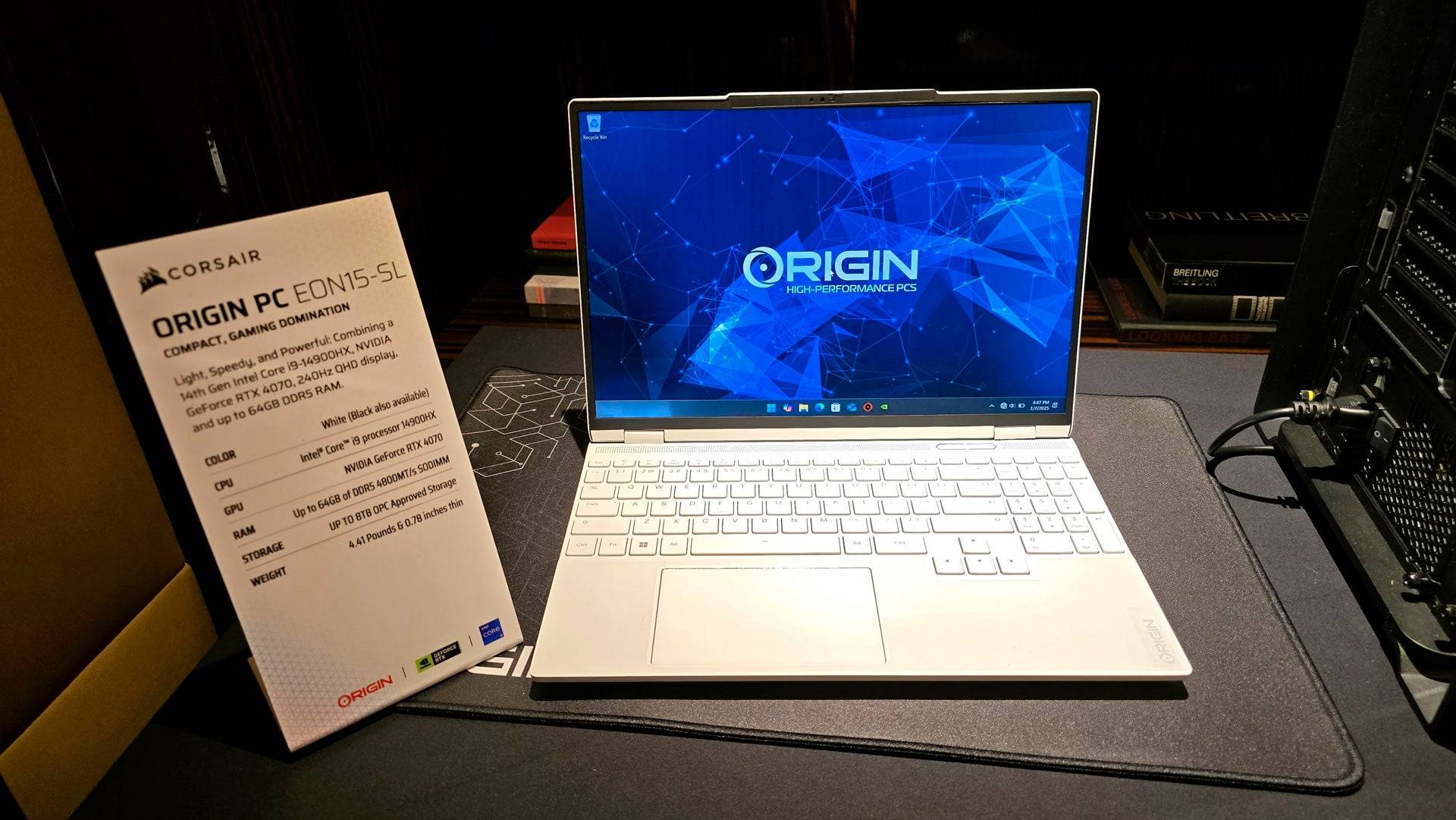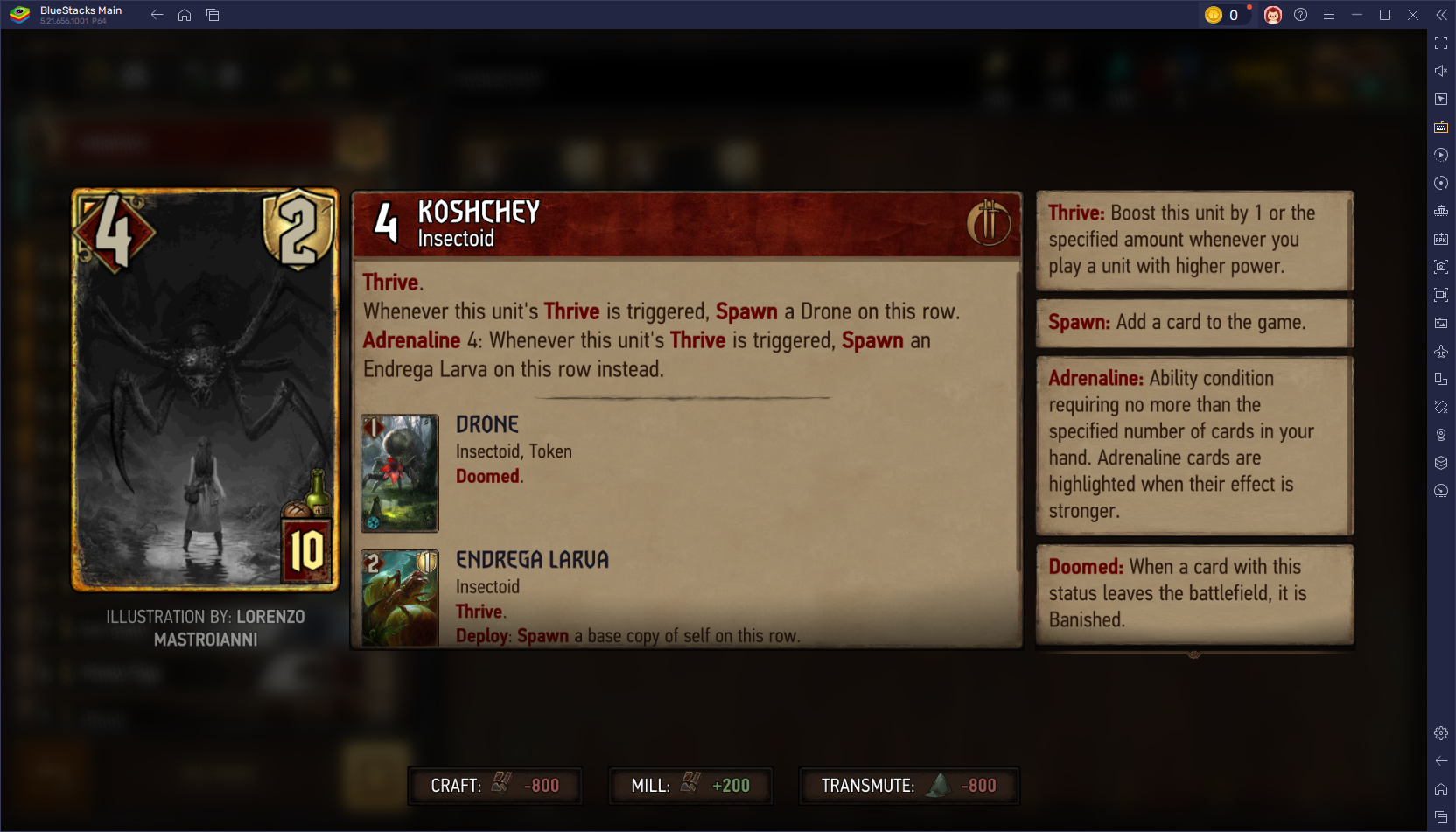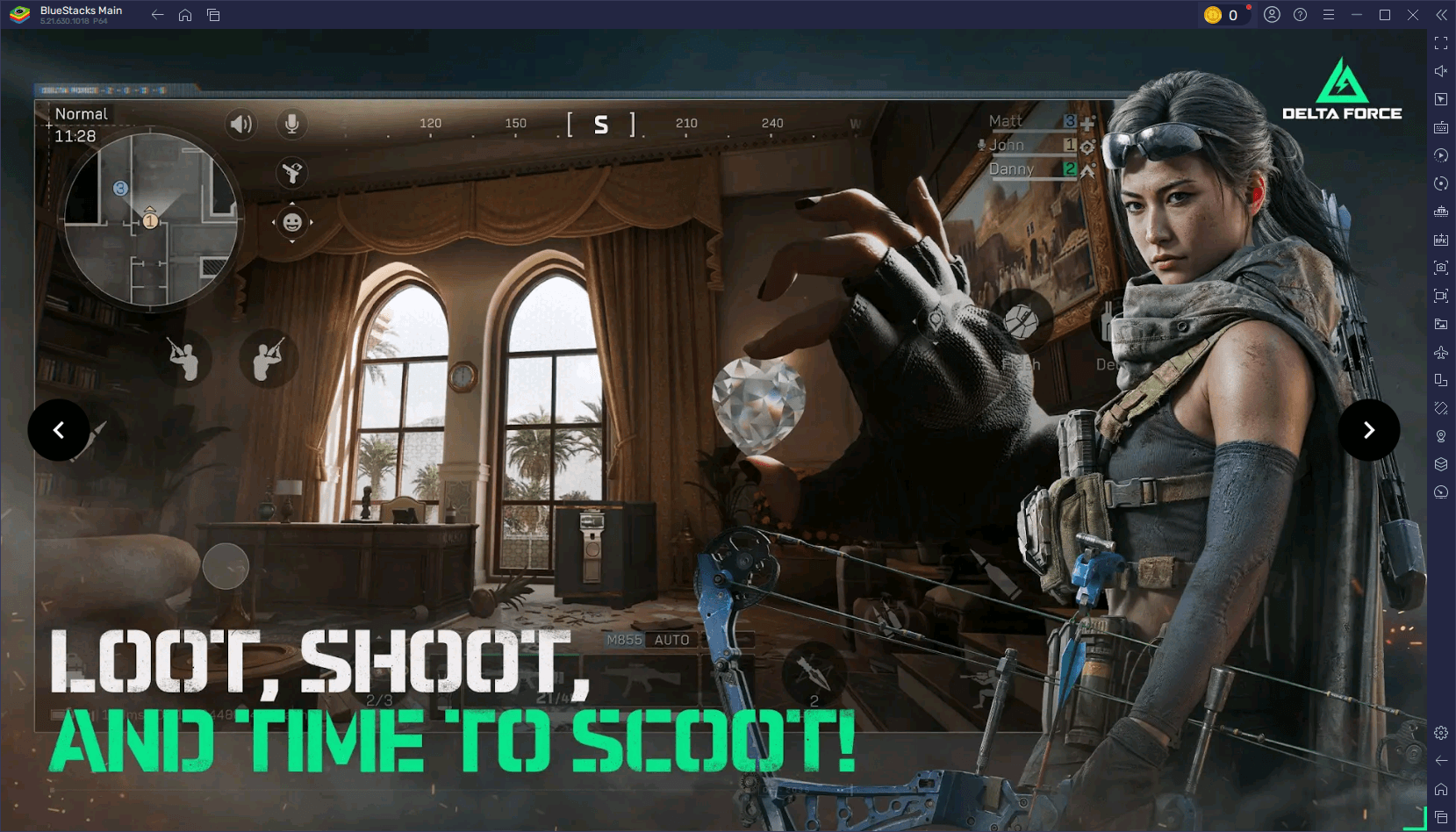CES 2025 Unveils Latest Gaming Laptop Trends
CES never disappoints when it comes to showcasing the latest in laptops, and this year's event was a prime example, especially in the realm of gaming laptops. I explored the bustling show floor, along with numerous packed suites and showrooms, to uncover the key trends shaping the future of gaming laptops in 2025. Here are the standout themes that dominated the gaming laptop scene this year.
A Huge Diversity of Designs
The variety in gaming laptop designs has always been impressive, but 2025 brought an even more pronounced flair. Brands like Gigabyte and MSI are pushing the boundaries, blending productivity with gaming aesthetics. High-end gaming laptops are now expected to offer something "extra" beyond just superior hardware.
This year, expect gaming laptops to showcase a broader range of styles. From the sleek, professional-looking Gigabyte Aero series, which blends seamlessly into a business environment, to the bold MSI Titan 18 HX AI Dragonforged Edition, adorned with striking graphics on its lid, there's something for every taste.
 RGB lighting remains a staple, with innovations like wrap-around lighting rings, illuminated mechanical keyboards, and trackpad lights. The Asus ROG Strix Scar series, with its AniME Dot Matrix LED display, particularly stood out, offering customizable text and animations on its lid.
RGB lighting remains a staple, with innovations like wrap-around lighting rings, illuminated mechanical keyboards, and trackpad lights. The Asus ROG Strix Scar series, with its AniME Dot Matrix LED display, particularly stood out, offering customizable text and animations on its lid.
While the core designs remain familiar, anticipate some fresh novelties alongside the traditional spectrum of large, heavy models to sleek, lightweight ones, all equipped with a diverse range of hardware.
 AI Assistants are Coming
AI Assistants are Coming
Last year, AI integration in laptops was a buzzword, but often fell short of expectations. This year, however, multiple vendors introduced AI Assistants designed to enhance user experience by controlling PCs without the need for manual software interaction.
In one demonstration, an MSI representative showed how a chatbot could understand game preferences and automatically adjust performance settings to match the game's intensity. While I remain skeptical about the actual time savings compared to manual adjustments, the potential of these systems, especially if they operate offline, is intriguing. We'll need to see how these features evolve and perform in real-world scenarios.
Mini-LED, Rollable Displays and Other Novelties
Mini-LED technology is finally making significant strides in the gaming laptop market. Asus, MSI, and Gigabyte showcased Mini-LED laptops with top-tier specifications and pricing. These models featured over 1,100 local dimming zones to minimize blooming and enhance contrast, delivering exceptional brightness and color vibrancy. While OLED still leads in contrast, Mini-LED's resistance to burn-in and higher sustained brightness make it an exciting prospect for future models.
There were also intriguing novelties on display. The ASUS ROG Flow X13, returning after a year's hiatus, now supports eGPUs via USB4, promising enhanced performance with future RTX 5090 eGPU compatibility. Meanwhile, Asus showcased the Zenbook Duo, a versatile dual-screen productivity laptop. However, Lenovo's ThinkBook Plus Gen 6 Rollable stole the show with its innovative 14-inch rollable OLED display, which extends an additional 2.7 inches at the push of a button. While the first-generation product raises durability concerns, it's a pioneering step that could improve with further development.
 Ultrabooks Continue to Rise, Even for Gaming
Ultrabooks Continue to Rise, Even for Gaming
Ultrabooks are increasingly prominent, even within gaming line-ups. Major manufacturers now offer gaming laptops in this sleek, lightweight, and premium design category. Gigabyte, for instance, has transformed its Aero series into an Ultrabook form factor, blending gaming performance with exceptional portability and productivity.
This trend makes sense for gamers who don't require the highest settings for the latest games. As demonstrated in last year's review of the Asus TUF Gaming A14, these machines can accommodate dedicated graphics cards without sacrificing portability or productivity.
 Moreover, with the latest AMD and Intel processors, gaming performance is improving significantly. Features like AMD FidelityFX Super Resolution and Intel XeSS, along with frame generation, enable even integrated graphics to handle demanding games at playable levels. This development questions the necessity of lower-end GPUs like the RTX 4050M for casual gaming.
Moreover, with the latest AMD and Intel processors, gaming performance is improving significantly. Features like AMD FidelityFX Super Resolution and Intel XeSS, along with frame generation, enable even integrated graphics to handle demanding games at playable levels. This development questions the necessity of lower-end GPUs like the RTX 4050M for casual gaming.
Cloud gaming services like Xbox Cloud Gaming and Nvidia GeForce Now also enhance the appeal of these ultrabooks, offering a robust gaming experience without the need for dedicated gaming hardware.
The world of gaming laptops is brimming with exciting developments, and we'll keep you updated throughout the year. What trends caught your eye? Share your thoughts in the comments below!
-
1

GTA 6 Set for Fall 2025 Release, CEO Confirms
Apr 03,2025
-
2

First ALGS in Asia Emerges in Japan
Jan 19,2025
-
3

Introducing the Ultimate Guide to Seamless Character Swapping in Dynasty Warriors: Origins
Feb 25,2025
-
4

Roblox: CrossBlox Codes (January 2025)
Mar 04,2025
-
5
![Roblox Forsaken Characters Tier List [UPDATED] (2025)](https://img.jdzca.com/uploads/18/17380116246797f3e8a8a39.jpg)
Roblox Forsaken Characters Tier List [UPDATED] (2025)
Mar 05,2025
-
6

Max Hunter Rank in Monster Hunter Wilds: Tips to Increase
Apr 04,2025
-
7

Cute mobs in Minecraft: pink pigs and why they are needed
Mar 06,2025
-
8

Capcom Spotlight Feb 2025 Showcases Monster Hunter Wilds, Onimusha and More
Apr 01,2025
-
9

Gwent: Top 5 Witcher Decks (2025 Update)
Mar 13,2025
-
10

Delta Force Mobile: Beginner's Guide to Getting Started
Apr 23,2025
-
Download

Portrait Sketch
Photography / 37.12M
Update: Dec 17,2024
-
Download

Friendship with Benefits
Casual / 150.32M
Update: Dec 13,2024
-
Download
![[NSFW 18+] Sissy Trainer](https://img.jdzca.com/uploads/16/1719638919667f9b874d57e.png)
[NSFW 18+] Sissy Trainer
Casual / 36.00M
Update: Dec 11,2024
-
4
F.I.L.F. 2
-
5
슬롯 마카오 카지노 - 정말 재미나는 리얼 슬롯머신
-
6
Pocket Touch Simulation! for
-
7
Shuffles by Pinterest
-
8
Life with a College Girl
-
9
Chubby Story [v1.4.2] (Localizations)
-
10
Hunter Akuna














